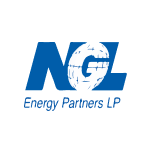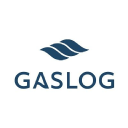NGL

NGL Energy Partners LP
NGL
(2.0)5,19 USD
-4.68% ROA
-38.83% ROE
-4.16x PER
637.387.530,00 USD
382.82% DER
0% Yield
-2.87% NPM
NGL Energy Partners LP Stock Analysis
NGL Energy Partners LP Fundamental Analysis
Fundamental analysis in stock investing is like studying the foundation of a house before buying it. It involves looking at a company's financial health, like its earnings, assets, and debts, to determine if it's a good investment based on its fundamental strength and potential for growth.
| # | Analysis | Rating |
|---|---|---|
| 1 |
PBV
The stock's low PBV ratio (0.69x) suggests it's undervalued, making it an attractive opportunity for investors. |
|
| 2 |
ROE
The stock's ROE falls within an average range (12.14%), demonstrating satisfactory profitability and efficiency in utilizing shareholders' equity. |
|
| 3 |
ROA
The stock's ROA (1.35%) shows that it's doing a pretty good job at making money from its assets, making it a solid choice to invest and earn steady profits. |
|
| 4 |
Revenue Growth
With a track record of continuous revenue growth in the last three years, this company offers a promising investment opportunity |
|
| 5 |
Net Profit Growth
This company's net profit has consistently grown over the past three years, showcasing a positive financial trend and making it an appealing investment opportunity. |
|
| 6 |
Graham Number
The Graham number calculation reveals that this company's stock price is potentially underestimated, implying that it may be a promising investment option. |
|
| 7 |
Buffet Intrinsic Value
The company's stock seems undervalued (823) by Warren Buffett's formula, indicating a promising investment opportunity as its intrinsic value exceeds the market price. |
|
| 8 |
DER
The stock is burdened with a heavy load of debt (369%), making it financially unstable and potentially risky for investors. |
|
| 9 |
Assets Growth
Company's revenue has stayed stagnant, showing no signs of improvement and making it a less favorable choice. |
|
| 10 |
Dividend Growth
The company's dividend growth has shown no improvement in the past three years, making it a less attractive investment option for those seeking increasing returns. |
|
| 11 |
Dividend
No dividends from the company in the past three years raises doubts about its profitability for shareholders. |
NGL Energy Partners LP Technical Analysis
Technical analysis in stock investing is like reading the patterns on a weather map to predict future weather conditions. It involves studying past stock price movements and trading volumes to make predictions about where a stock's price might go next, without necessarily looking at the company's financial health.
| # | Analysis | Recommendation |
|---|---|---|
| 1 | Awesome Oscillator | Hold |
| 2 | MACD | Sell |
| 3 | RSI | Hold |
| 4 | Stoch RSI | Hold |
NGL Energy Partners LP Price Chart
Financial Statements
Financial statements are like report cards for companies. They show how much money a company makes (income statement), what it owns and owes (balance sheet), and where it spends its money (cash flow statement), helping stock investors understand if a company is healthy and worth investing in.
Income Statements
An income statement for a company is like a scoreboard for its profits and losses. It shows how much money the company made (revenue) and how much it spent to make that money (expenses), helping stock investors see if a company is making a profit or not.
Revenue in stock investing is the total amount of money a company earns from its sales, and it's a key factor that investors consider to assess a company's financial performance and growth potential.
| Year | Revenue | Growth |
|---|---|---|
| 2009 | 734.991.000 | |
| 2010 | 809.633.000 | 9.22% |
| 2011 | 735.506.000 | -10.08% |
| 2012 | 1.310.473.000 | 43.87% |
| 2013 | 4.417.767.000 | 70.34% |
| 2014 | 9.699.274.000 | 54.45% |
| 2015 | 16.802.057.000 | 42.27% |
| 2016 | 11.742.110.000 | -43.09% |
| 2017 | 13.022.228.000 | 9.83% |
| 2018 | 16.907.296.000 | 22.98% |
| 2019 | 8.689.157.000 | -94.58% |
| 2020 | 7.584.000.000 | -14.57% |
| 2021 | 5.227.023.000 | -45.09% |
| 2022 | 7.947.915.000 | 34.23% |
| 2023 | 8.694.904.000 | 8.59% |
| 2024 | 7.364.384.000 | -18.07% |
| 2024 | 6.956.571.000 | -5.86% |
| 2025 | 5.549.036.000 | -25.37% |
Research and Development Expenses are the costs a company incurs to create and improve its products or services, which can be important for investors to evaluate a company's innovation and potential for future growth.
| Year | Research and Development Expenses | Growth |
|---|---|---|
| 2009 | 0 | |
| 2010 | 0 | 0% |
| 2011 | 0 | 0% |
| 2012 | 0 | 0% |
| 2013 | 0 | 0% |
| 2014 | 0 | 0% |
| 2015 | 0 | 0% |
| 2016 | 0 | 0% |
| 2017 | 0 | 0% |
| 2018 | 0 | 0% |
| 2019 | 0 | 0% |
| 2020 | 0 | 0% |
| 2021 | 0 | 0% |
| 2022 | 0 | 0% |
| 2023 | 0 | 0% |
| 2024 | 0 | 0% |
| 2024 | 0 | 0% |
| 2025 | 0 | 0% |
General and Administrative Expenses are the costs a company incurs to run its day-to-day operations, such as office rent, salaries, and utilities, which investors consider to understand a company's overall efficiency and management effectiveness.
| Year | General and Administrative Expenses | Growth |
|---|---|---|
| 2009 | 0 | |
| 2010 | 0 | 0% |
| 2011 | 6.326.000 | 100% |
| 2012 | 16.009.000 | 60.48% |
| 2013 | 52.698.000 | 69.62% |
| 2014 | 79.860.000 | 34.01% |
| 2015 | 149.430.000 | 46.56% |
| 2016 | 139.541.000 | -7.09% |
| 2017 | 116.566.000 | -19.71% |
| 2018 | 98.129.000 | -18.79% |
| 2019 | 107.407.000 | 8.64% |
| 2020 | 113.664.000 | 5.5% |
| 2021 | 70.468.000 | -61.3% |
| 2022 | 63.546.000 | -10.89% |
| 2023 | 71.818.000 | 11.52% |
| 2024 | 69.984.000 | -2.62% |
| 2024 | 121.881.000 | 42.58% |
| 2025 | 60.056.000 | -102.95% |
EBITDA stands for Earnings Before Interest, Taxes, Depreciation, and Amortization. It is a measure that helps stock investors analyze a company's profitability by looking at its earnings without considering certain expenses. This helps to get a clearer picture of the company's financial performance and its ability to generate cash flow.
| Year | EBITDA | Growth |
|---|---|---|
| 2009 | 13.035.000 | |
| 2010 | 17.030.000 | 23.46% |
| 2011 | 16.386.000 | -3.93% |
| 2012 | 31.705.000 | 48.32% |
| 2013 | 166.528.000 | 80.96% |
| 2014 | 235.475.000 | 29.28% |
| 2015 | 358.410.000 | 34.3% |
| 2016 | 181.248.999 | -97.74% |
| 2017 | 526.324.000 | 65.56% |
| 2018 | 189.236.000 | -178.13% |
| 2019 | 298.962.000 | 36.7% |
| 2020 | 266.645.000 | -12.12% |
| 2021 | -124.476.000 | 314.21% |
| 2022 | 377.511.000 | 132.97% |
| 2023 | 602.103.000 | 37.3% |
| 2024 | 138.340.000 | -335.23% |
| 2024 | 395.987.000 | 65.06% |
| 2025 | 571.476.000 | 30.71% |
Gross profit is the money a company makes from selling its products or services after subtracting the cost of producing or providing them, and it is an important measure for investors to understand a company's profitability.
| Year | Gross Profit | Growth |
|---|---|---|
| 2009 | 28.573.000 | |
| 2010 | 57.484.000 | 50.29% |
| 2011 | 27.291.000 | -110.63% |
| 2012 | 93.450.000 | 70.8% |
| 2013 | 309.804.000 | 69.84% |
| 2014 | 445.821.000 | 30.51% |
| 2015 | 649.901.000 | 31.4% |
| 2016 | 674.149.000 | 3.6% |
| 2017 | 477.114.000 | -41.3% |
| 2018 | 285.635.000 | -67.04% |
| 2019 | 494.123.000 | 42.19% |
| 2020 | 714.305.000 | 30.82% |
| 2021 | 415.974.000 | -71.72% |
| 2022 | 519.883.000 | 19.99% |
| 2023 | 771.259.000 | 32.59% |
| 2024 | 741.036.000 | -4.08% |
| 2024 | 723.254.000 | -2.46% |
| 2025 | 672.528.000 | -7.54% |
Net income in stock investing is like the money a company actually gets to keep as profit after paying all its bills, and it's an important measure to understand how well a company is doing financially.
| Year | Net Profit | Growth |
|---|---|---|
| 2009 | 4.949.000 | |
| 2010 | 8.043.000 | 38.47% |
| 2011 | 3.636.000 | -121.2% |
| 2012 | 7.876.000 | 53.83% |
| 2013 | 47.940.000 | 83.57% |
| 2014 | 47.655.000 | -0.6% |
| 2015 | 16.661.000 | -186.03% |
| 2016 | -201.954.000 | 108.25% |
| 2017 | 137.042.000 | 247.37% |
| 2018 | -70.875.000 | 293.36% |
| 2019 | 360.047.000 | 119.68% |
| 2020 | -180.545.000 | 299.42% |
| 2021 | -637.418.000 | 71.68% |
| 2022 | -184.101.000 | -246.23% |
| 2023 | 51.386.000 | 458.27% |
| 2024 | 112.112.000 | 54.17% |
| 2024 | -143.755.000 | 177.99% |
| 2025 | 38.732.000 | 471.15% |
EPS, or earnings per share, is a measure that shows how much profit a company has earned for each outstanding share of its stock, and it is important for stock investors as it helps understand the profitability of a company and compare it with other companies in the market.
| Year | Earning per Share (EPS) | Growth |
|---|---|---|
| 2009 | 0 | |
| 2010 | 1 | 0% |
| 2011 | 0 | 0% |
| 2012 | 0 | 0% |
| 2013 | 1 | 0% |
| 2014 | 1 | 0% |
| 2015 | 0 | 0% |
| 2016 | -2 | 100% |
| 2017 | 1 | 0% |
| 2018 | -1 | 0% |
| 2019 | 3 | 100% |
| 2020 | -1 | 300% |
| 2021 | -5 | 75% |
| 2022 | -1 | -300% |
| 2023 | 0 | 0% |
| 2024 | 1 | 0% |
| 2024 | -2 | 100% |
| 2025 | -1 | 0% |
Cashflow Statements
Cashflow statements show the movement of money in and out of a company, helping stock investors understand how much money a company makes and spends. By examining cashflow statements, investors can assess if a company is generating enough cash to pay its bills, invest in growth, and provide returns to stockholders.
Free cash flow is the leftover cash that a company generates after covering its operating expenses and capital expenditures, which is important for stock investors as it shows how much money a company has available to invest in growth, pay dividends, or reduce debt.
| Year | Free Cashflow | Growth |
|---|---|---|
| 2009 | 21.882.000 | |
| 2010 | 6.898.000 | -217.22% |
| 2011 | -30.749.000 | 122.43% |
| 2012 | 82.785.000 | 137.14% |
| 2013 | 59.756.000 | -38.54% |
| 2014 | -79.912.000 | 174.78% |
| 2015 | 238.176.000 | 133.55% |
| 2016 | -310.390.000 | 176.73% |
| 2017 | -390.695.000 | 20.55% |
| 2018 | 4.206.000 | 9388.99% |
| 2019 | -118.336.000 | 103.55% |
| 2020 | -91.658.000 | -29.11% |
| 2021 | 117.193.000 | 178.21% |
| 2022 | 63.487.000 | -84.59% |
| 2023 | 297.421.000 | 78.65% |
| 2024 | 223.869.000 | -32.85% |
| 2024 | 31.347.000 | -614.16% |
| 2025 | -77.071.000 | 140.67% |
Operating cash flow represents the cash generated or consumed by a company's day-to-day operations, excluding external investing or financing activities, and is crucial for stock investors as it shows how much cash a company is generating from its core business operations.
| Year | Operating Cashflow | Growth |
|---|---|---|
| 2009 | 22.459.000 | |
| 2010 | 7.480.000 | -200.25% |
| 2011 | -30.749.000 | 124.33% |
| 2012 | 90.329.000 | 134.04% |
| 2013 | 132.231.000 | 31.69% |
| 2014 | 85.236.000 | -55.14% |
| 2015 | 262.394.000 | 67.52% |
| 2016 | 351.495.000 | 25.35% |
| 2017 | -26.824.000 | 1410.38% |
| 2018 | 137.967.000 | 119.44% |
| 2019 | 337.250.000 | 59.09% |
| 2020 | 464.055.000 | 27.33% |
| 2021 | 303.994.000 | -52.65% |
| 2022 | 205.846.000 | -47.68% |
| 2023 | 445.186.000 | 53.76% |
| 2024 | 376.164.000 | -18.35% |
| 2024 | 75.989.000 | -395.02% |
| 2025 | -17.148.000 | 543.14% |
Capex, short for capital expenditures, refers to the money a company spends on acquiring or upgrading tangible assets like buildings, equipment, or technology, which is important for stock investors as it indicates how much a company is investing in its infrastructure to support future growth and profitability.
| Year | Capital Expenditure | Growth |
|---|---|---|
| 2009 | 577.000 | |
| 2010 | 582.000 | 0.86% |
| 2011 | 0 | 0% |
| 2012 | 7.544.000 | 100% |
| 2013 | 72.475.000 | 89.59% |
| 2014 | 165.148.000 | 56.12% |
| 2015 | 24.218.000 | -581.92% |
| 2016 | 661.885.000 | 96.34% |
| 2017 | 363.871.000 | -81.9% |
| 2018 | 133.761.000 | -172.03% |
| 2019 | 455.586.000 | 70.64% |
| 2020 | 555.713.000 | 18.02% |
| 2021 | 186.801.000 | -197.49% |
| 2022 | 142.359.000 | -31.22% |
| 2023 | 147.765.000 | 3.66% |
| 2024 | 152.295.000 | 2.97% |
| 2024 | 44.642.000 | -241.15% |
| 2025 | 59.923.000 | 25.5% |
Balance Sheet
Balance sheets provide a snapshot of a company's financial health and its assets (such as cash, inventory, and property) and liabilities (like debts and obligations) at a specific point in time. For stock investors, balance sheets help assess the company's overall worth and evaluate its ability to meet financial obligations and support future growth.
Equity refers to the ownership interest or stake that shareholders have in a company, representing their claim on its assets and earnings after all debts and liabilities are paid.
| Year | Equity | Growth |
|---|---|---|
| 2009 | 42.691.000 | |
| 2010 | 46.403.000 | 8% |
| 2011 | 56.000 | -82762.5% |
| 2012 | 405.757.000 | 99.99% |
| 2013 | 895.158.000 | 54.67% |
| 2014 | 1.537.127.000 | 41.76% |
| 2015 | 3.220.446.000 | 52.27% |
| 2016 | 1.735.133.000 | -85.6% |
| 2017 | 2.193.548.000 | 20.9% |
| 2018 | 81.688.000 | -2585.28% |
| 2019 | 58.493.000 | -39.65% |
| 2020 | 72.569.000 | 19.4% |
| 2021 | 69.205.000 | -4.86% |
| 2022 | 17.086.000 | -305.04% |
| 2023 | 783.936.000 | 97.82% |
| 2024 | 831.266.000 | 5.69% |
| 2024 | 466.307.000 | -78.27% |
| 2025 | 765.264.001 | 39.07% |
Assets represent the valuable resources that a company owns, such as cash, inventory, property, and equipment, and understanding a company's assets helps investors assess its value and potential for generating future profits.
| Year | Assets | Growth |
|---|---|---|
| 2009 | 103.434.000 | |
| 2010 | 111.580.000 | 7.3% |
| 2011 | 163.833.000 | 31.89% |
| 2012 | 749.137.000 | 78.13% |
| 2013 | 2.291.347.000 | 67.31% |
| 2014 | 4.167.223.000 | 45.02% |
| 2015 | 6.547.501.000 | 36.35% |
| 2016 | 5.560.155.000 | -17.76% |
| 2017 | 6.320.379.000 | 12.03% |
| 2018 | 6.151.122.000 | -2.75% |
| 2019 | 5.902.493.000 | -4.21% |
| 2020 | 6.498.736.000 | 9.17% |
| 2021 | 5.947.341.000 | -9.27% |
| 2022 | 6.070.345.000 | 2.03% |
| 2023 | 5.456.144.000 | -11.26% |
| 2024 | 5.627.915.000 | 3.05% |
| 2024 | 5.020.094.000 | -12.11% |
| 2025 | 4.839.579.000 | -3.73% |
Liabilities refer to the financial obligations or debts that a company owes to creditors or external parties, and understanding a company's liabilities is important for investors as it helps assess the company's financial risk and ability to meet its obligations.
| Year | Liabilities | Growth |
|---|---|---|
| 2009 | 60.743.000 | |
| 2010 | 65.177.000 | 6.8% |
| 2011 | 116.480.000 | 44.04% |
| 2012 | 343.808.000 | 66.12% |
| 2013 | 1.401.929.000 | 75.48% |
| 2014 | 2.635.370.000 | 46.8% |
| 2015 | 3.874.381.000 | 31.98% |
| 2016 | 3.866.090.000 | -0.21% |
| 2017 | 4.089.687.000 | 5.47% |
| 2018 | 3.982.451.000 | -2.69% |
| 2019 | 3.474.861.000 | -14.61% |
| 2020 | 4.225.763.000 | 17.77% |
| 2021 | 4.448.085.000 | 5% |
| 2022 | 4.804.795.000 | 7.42% |
| 2023 | 4.137.618.000 | -16.12% |
| 2024 | 4.812.726.000 | 14.03% |
| 2024 | 4.020.927.000 | -19.69% |
| 2025 | 4.074.315.000 | 1.31% |
NGL Energy Partners LP Financial Ratio (TTM)
Valuation Metrics
- Revenue per Share
- 50.77
- Net Income per Share
- -1.16
- Price to Earning Ratio
- -4.16x
- Price To Sales Ratio
- 0.09x
- POCF Ratio
- 2.1
- PFCF Ratio
- 5
- Price to Book Ratio
- 0.8
- EV to Sales
- 0.56
- EV Over EBITDA
- 11.24
- EV to Operating CashFlow
- 12.35
- EV to FreeCashFlow
- 29.44
- Earnings Yield
- -0.24
- FreeCashFlow Yield
- 0.2
- Market Cap
- 0,64 Bil.
- Enterprise Value
- 3,75 Bil.
- Graham Number
- 12.52
- Graham NetNet
- -25.84
Income Statement Metrics
- Net Income per Share
- -1.16
- Income Quality
- -1.99
- ROE
- -0.25
- Return On Assets
- -0.04
- Return On Capital Employed
- 0.04
- Net Income per EBT
- 1
- EBT Per Ebit
- -1.04
- Ebit per Revenue
- 0.03
- Effective Tax Rate
- 0.02
Margins
- Sales, General, & Administrative to Revenue
- 0.02
- Research & Developement to Revenue
- 0
- Stock Based Compensation to Revenue
- 0
- Gross Profit Margin
- 0.11
- Operating Profit Margin
- 0.03
- Pretax Profit Margin
- -0.03
- Net Profit Margin
- -0.03
Dividends
- Dividend Yield
- 0
- Dividend Yield %
- 0
- Payout Ratio
- -2.58
- Dividend Per Share
- 0
Operating Metrics
- Operating Cashflow per Share
- 2.29
- Free CashFlow per Share
- 0.96
- Capex to Operating CashFlow
- 0.58
- Capex to Revenue
- 0.03
- Capex to Depreciation
- 0.64
- Return on Invested Capital
- 0.05
- Return on Tangible Assets
- -0.05
- Days Sales Outstanding
- 40.9
- Days Payables Outstanding
- 38
- Days of Inventory on Hand
- 9.61
- Receivables Turnover
- 8.92
- Payables Turnover
- 9.61
- Inventory Turnover
- 37.99
- Capex per Share
- 1.33
Balance Sheet
- Cash per Share
- 0,04
- Book Value per Share
- 5,78
- Tangible Book Value per Share
- -6.02
- Shareholders Equity per Share
- 6.02
- Interest Debt per Share
- 23.37
- Debt to Equity
- 3.83
- Debt to Assets
- 0.63
- Net Debt to EBITDA
- 9.33
- Current Ratio
- 1.15
- Tangible Asset Value
- -0,80 Bil.
- Net Current Asset Value
- -3,08 Bil.
- Invested Capital
- 3905640000
- Working Capital
- 0,13 Bil.
- Intangibles to Total Assets
- 0.32
- Average Receivables
- 0,78 Bil.
- Average Payables
- 0,67 Bil.
- Average Inventory
- 144808500
- Debt to Market Cap
- 4.79
Dividends
Dividends in stock investing are like rewards that companies give to their shareholders. They are a portion of the company's profits distributed to investors, typically in the form of cash payments, as a way for them to share in the company's success.
| Year | Dividends | Growth |
|---|---|---|
| 2011 | 1 | |
| 2012 | 2 | 100% |
| 2013 | 2 | -100% |
| 2014 | 2 | 50% |
| 2015 | 3 | 0% |
| 2016 | 2 | -100% |
| 2017 | 2 | 0% |
| 2018 | 2 | 0% |
| 2019 | 2 | 0% |
| 2020 | 1 | 0% |
NGL Energy Partners LP Profile
About NGL Energy Partners LP
NGL Energy Partners LP engages in the transportation, storage, blending, and marketing of crude oil, natural gas liquids, refined products / renewables, and water solutions. The company operates in three segments: Water Solutions, Crude Oil Logistics, and Liquids Logistics. The Water Solutions segment transports, treats, recycles, and disposes produced and flowback water generated from oil and natural gas production; aggregates and sells recovered crude oil; disposes solids, such as tank bottoms, and drilling fluid and muds, as well as performs truck and frac tank washouts; and sells produced water for reuse and recycle, and brackish non-potable water. The Crude Oil Logistics segment purchases crude oil from producers and marketers, and transports it to refineries for resale at pipeline injection stations, storage terminals, barge loading facilities, rail facilities, refineries, and other trade hubs; and provides storage, terminaling, and transportation services through pipelines. The Liquids Logistics segment supplies natural gas liquids, refined petroleum products, and biodiesel to commercial, retail, and industrial customers in the United States and Canada through its 24 terminals, third-party storage and terminal facilities, and nine common carrier pipelines, as well as through fleet of leased railcars. This segment is also involved in the marine export of butane through its facility located in Chesapeake, Virginia. NGL Energy Holdings LLC serves as the general partner of the company. The company was founded in 1940 and is headquartered in Tulsa, Oklahoma.
- CEO
- Mr. H. Michael Krimbill
- Employee
- 607
- Address
-
6120 South Yale Avenue
Tulsa, 74136
NGL Energy Partners LP Executives & BODs
| # | Name | Age |
|---|---|---|
| 1 |
Mr. H. Michael Krimbill President, Chief Executive Officer, & Director of NGL Energy Holdings LLC |
70 |
| 2 |
Ms. Jennifer L. Kingham Executive Vice President & Chief Information Officer of NGL Energy Holdings LLC |
70 |
| 3 |
Mr. Vincent J. Osterman President of Eastern Retail Operations |
70 |
| 4 |
Mr. Douglas W. White Executive Vice President of NGL Water Solutions - NGL Energy Holdings LLC |
70 |
| 5 |
Mr. Jeff Pinter Executive Vice President of Liquids Logistics |
70 |
| 6 |
Mr. Ryan Collins General Counsel & Corporate Secretary |
70 |
| 7 |
Mr. Don Robinson Executive Vice President of Crude Oil Logistics |
70 |
| 8 |
Mr. Bradley P. Cooper Executive Vice President, Compliance Officer & Chief Financial Officer of NGL Energy Holdings LLC |
70 |
| 9 |
Mr. James F. Winter Senior Vice President of NGL Water Solutions - NGL Energy Holdings LLC |
70 |
| 10 |
Mr. Lawrence J. Thuillier Chief Accounting Officer of NGL Energy Holdings LLC |
70 |


















